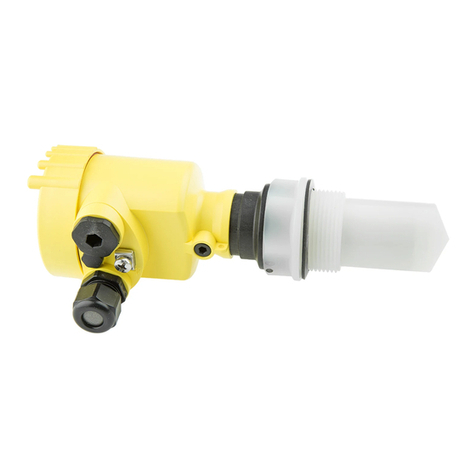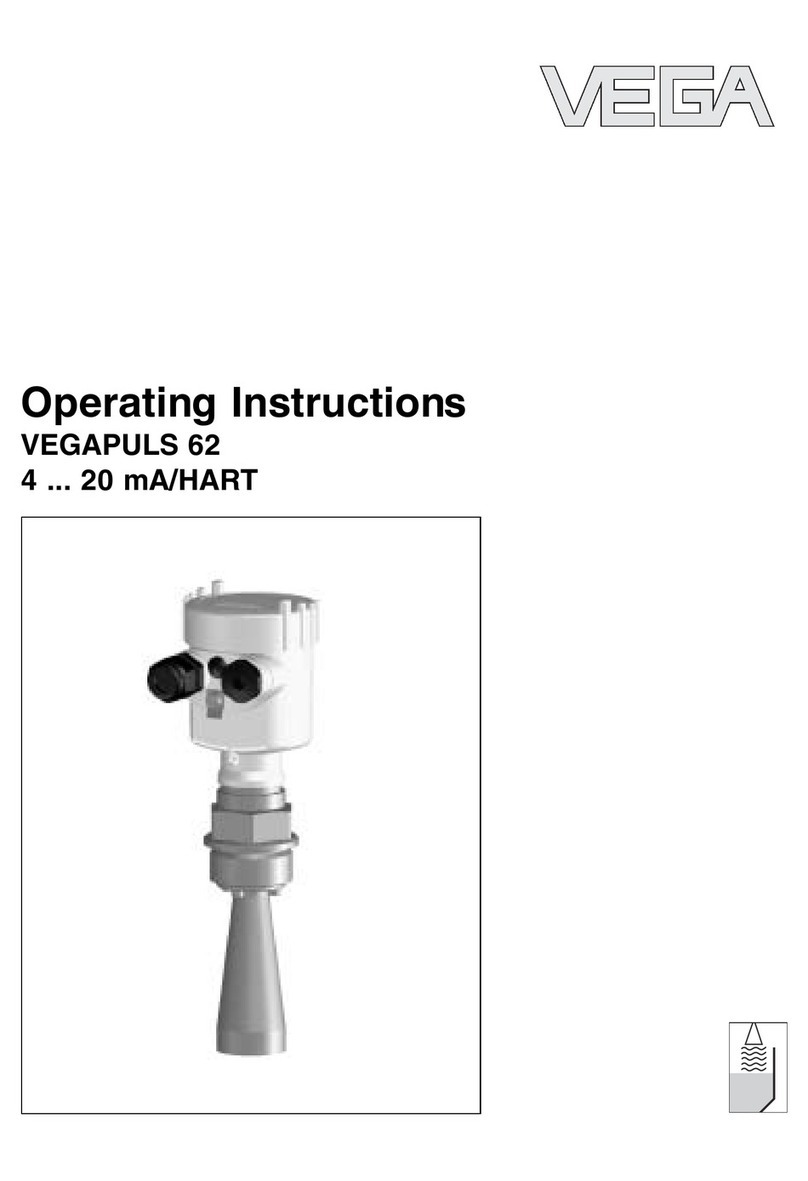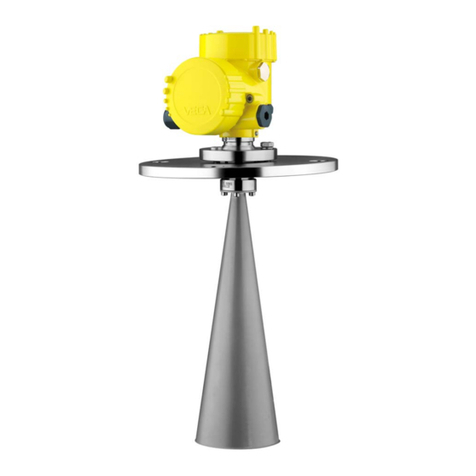Vega VEGAFLEX 86 User manual

Operating Instructions
TDR sensor for continuous level and
interface measurement of liquids
VEGAFLEX 86
Probus PA
Coax probe
-196 … +280 °C
-196 … +450 °C
Document ID: 44229

2
Contents
VEGAFLEX 86 • Probus PA
44229-EN-200212
Contents
1 About this document ............................................................................................................... 4
1.1 Function ........................................................................................................................... 4
1.2 Target group ..................................................................................................................... 4
1.3 Symbols used................................................................................................................... 4
2 For your safety ......................................................................................................................... 5
2.1 Authorised personnel ....................................................................................................... 5
2.2 Appropriate use................................................................................................................ 5
2.3 Warning about incorrect use............................................................................................. 5
2.4 General safety instructions............................................................................................... 5
2.5 EU conformity................................................................................................................... 6
2.6 NAMUR recommendations .............................................................................................. 6
2.7 Installation and operation in the USA and Canada ........................................................... 6
2.8 Environmental instructions ............................................................................................... 6
3 Product description ................................................................................................................. 7
3.1 Conguration.................................................................................................................... 7
3.2 Principle of operation........................................................................................................ 9
3.3 Packaging, transport and storage................................................................................... 11
3.4 Accessories.................................................................................................................... 11
4 Mounting................................................................................................................................. 13
4.1 General instructions ....................................................................................................... 13
4.2 Mounting instructions ..................................................................................................... 14
5 Connecting to power supply................................................................................................. 19
5.1 Preparing the connection ............................................................................................... 19
5.2 Connecting..................................................................................................................... 20
5.3 Wiring plan, single chamber housing.............................................................................. 21
5.4 Wiring plan, double chamber housing ............................................................................ 21
5.5 Double chamber housing with VEGADIS-Adapter.......................................................... 23
5.6 Wiring plan - version IP66/IP68, 1 bar ............................................................................ 24
5.7 Set instrument address .................................................................................................. 24
5.8 Switch-on phase............................................................................................................. 25
6 Set up with the display and adjustment module ................................................................ 26
6.1 Insert display and adjustment module............................................................................ 26
6.2 Adjustment system......................................................................................................... 27
6.3 Parameter adjustment - Quick setup .............................................................................. 28
6.4 Parameter adjustment - Extended adjustment................................................................ 29
6.5 Saving the parameterisation data................................................................................... 47
7 Setup with PACTware............................................................................................................. 48
7.1 Connect the PC.............................................................................................................. 48
7.2 Parameter adjustment with PACTware............................................................................ 48
7.3 Set up with the quick setup............................................................................................. 49
7.4 Saving the parameterisation data................................................................................... 51
8 Set up with other systems .................................................................................................... 52
8.1 DD adjustment programs ............................................................................................... 52
9 Diagnostics and servicing .................................................................................................... 53
9.1 Maintenance .................................................................................................................. 53

3
Contents
VEGAFLEX 86 • Probus PA
44229-EN-200212
9.2 Diagnosis memory ......................................................................................................... 53
9.3 Status messages............................................................................................................ 54
9.4 Rectify faults................................................................................................................... 57
9.5 Exchanging the electronics module................................................................................ 60
9.6 Software update............................................................................................................. 60
9.7 How to proceed if a repair is necessary.......................................................................... 61
10 Dismount................................................................................................................................. 62
10.1 Dismounting steps.......................................................................................................... 62
10.2 Disposal ......................................................................................................................... 62
11 Supplement ............................................................................................................................ 63
11.1 Technical data ................................................................................................................ 63
11.2 Communication Probus PA........................................................................................... 74
11.3 Dimensions .................................................................................................................... 77
11.4 Industrial property rights................................................................................................. 82
11.5 Trademark ...................................................................................................................... 82
Safety instructions for Ex areas
Take note of the Ex specic safety instructions for Ex applications.
These instructions are attached as documents to each instrument
with Ex approval and are part of the operating instructions.
Editing status: 2020-01-24

4
1 About this document
VEGAFLEX 86 • Probus PA
44229-EN-200212
1 About this document
1.1 Function
This instruction provides all the information you need for mounting,
connection and setup as well as important instructions for mainte-
nance, fault rectication, the exchange of parts and the safety of the
user. Please read this information before putting the instrument into
operation and keep this manual accessible in the immediate vicinity
of the device.
1.2 Target group
This operating instructions manual is directed to trained personnel.
The contents of this manual must be made available to the qualied
personnel and implemented.
1.3 Symbols used
Document ID
This symbol on the front page of this instruction refers to the Docu-
ment ID. By entering the Document ID on www.vega.com you will
reach the document download.
Information, note, tip: This symbol indicates helpful additional infor-
mation and tips for successful work.
Note: This symbol indicates notes to prevent failures, malfunctions,
damage to devices or plants.
Caution: Non-observance of the information marked with this symbol
may result in personal injury.
Warning: Non-observance of the information marked with this symbol
may result in serious or fatal personal injury.
Danger: Non-observance of the information marked with this symbol
results in serious or fatal personal injury.
Ex applications
This symbol indicates special instructions for Ex applications.
• List
The dot set in front indicates a list with no implied sequence.
1 Sequence of actions
Numbers set in front indicate successive steps in a procedure.
Battery disposal
This symbol indicates special information about the disposal of bat-
teries and accumulators.

5
2 For your safety
VEGAFLEX 86 • Probus PA
44229-EN-200212
2 For your safety
2.1 Authorised personnel
All operations described in this documentation must be carried out
only by trained, qualied personnel authorised by the plant operator.
During work on and with the device, the required personal protective
equipment must always be worn.
2.2 Appropriate use
VEGAFLEX 86 is a sensor for continuous level measurement.
You can nd detailed information about the area of application in
chapter "Product description".
Operational reliability is ensured only if the instrument is properly
used according to the specications in the operating instructions
manual as well as possible supplementary instructions.
2.3 Warning about incorrect use
Inappropriate or incorrect use of this product can give rise to applica-
tion-specic hazards, e.g. vessel overll through incorrect mounting
or adjustment. Damage to property and persons or environmental
contamination can result. Also, the protective characteristics of the
instrument can be impaired.
2.4 General safety instructions
This is a state-of-the-art instrument complying with all prevailing
regulations and directives. The instrument must only be operated in a
technically awless and reliable condition. The operator is responsi-
ble for the trouble-free operation of the instrument. When measuring
aggressive or corrosive media that can cause a dangerous situation
if the instrument malfunctions, the operator has to implement suitable
measures to make sure the instrument is functioning properly.
During the entire duration of use, the user is obliged to determine the
compliance of the necessary occupational safety measures with the
current valid rules and regulations and also take note of new regula-
tions.
The safety instructions in this operating instructions manual, the na-
tional installation standards as well as the valid safety regulations and
accident prevention rules must be observed by the user.
For safety and warranty reasons, any invasive work on the device
beyond that described in the operating instructions manual may be
carried out only by personnel authorised by the manufacturer. Arbi-
trary conversions or modications are explicitly forbidden. For safety
reasons, only the accessory specied by the manufacturer must be
used.
To avoid any danger, the safety approval markings and safety tips on
the device must also be observed.

6
2 For your safety
VEGAFLEX 86 • Probus PA
44229-EN-200212
2.5 EU conformity
The device fulls the legal requirements of the applicable EU direc-
tives. By axing the CE marking, we conrm the conformity of the
instrument with these directives.
The EU conformity declaration can be found on our homepage.
Electromagnetic compatibility
Instruments in four-wire or Ex-d-ia version are designed for use in an
industrial environment. Nevertheless, electromagnetic interference
from electrical conductors and radiated emissions must be taken into
account, as is usual with class A instruments according to EN 61326-
1. If the instrument is used in a dierent environment, the electromag-
netic compatibility to other instruments must be ensured by suitable
measures.
2.6 NAMUR recommendations
NAMUR is the automation technology user association in the process
industry in Germany. The published NAMUR recommendations are
accepted as the standard in eld instrumentation.
The device fulls the requirements of the following NAMUR recom-
mendations:
• NE 21 – Electromagnetic compatibility of equipment
• NE 53 – Compatibility of eld devices and display/adjustment
components
• NE 107 – Self-monitoring and diagnosis of eld devices
For further information see www.namur.de.
2.7 Installation and operation in the USA and
Canada
This information is only valid for USA and Canada. Hence the follow-
ing text is only available in the English language.
Installations in the US shall comply with the relevant requirements of
the National Electrical Code (ANSI/NFPA 70).
Installations in Canada shall comply with the relevant requirements of
the Canadian Electrical Code.
2.8 Environmental instructions
Protection of the environment is one of our most important duties.
That is why we have introduced an environment management system
with the goal of continuously improving company environmental pro-
tection. The environment management system is certied according
to DIN EN ISO 14001.
Please help us full this obligation by observing the environmental
instructions in this manual:
• Chapter "Packaging, transport and storage"
• Chapter "Disposal"

7
3 Product description
VEGAFLEX 86 • Probus PA
44229-EN-200212
3 Product description
3.1 Conguration
The scope of delivery encompasses:
• Sensor VEGAFLEX 86
• Optional accessory
• Optionally integrated Bluetooth module
The further scope of delivery encompasses:
• Documentation
– Quick setup guide VEGAFLEX 86
– Instructions for optional instrument features
– Ex-specic "Safety instructions" (with Ex versions)
– If necessary, further certicates
Information:
Optional instrument features are also described in this operating
instructions manual. The respective scope of delivery results from the
order specication.
This operating instructions manual applies to the following instrument
versions:
• Hardware from 1.0.0
• Software from 1.3.0
• Only for instrument versions without SIL qualication
The type label contains the most important data for identication and
use of the instrument:
Scope of delivery
Scope of this operating
instructions
Type label

8
3 Product description
VEGAFLEX 86 • Probus PA
44229-EN-200212
2
1
12
13
14
15
11
10
5
3
6
4
7
8
9
Fig. 1: Layout of the type label (example)
1 Instrument type
2 Product code
3 Approvals
4 Power supply and signal output, electronics
5 Protection rating
6 Probe length (measurement accuracy optional)
7 Process and ambient temperature, process pressure
8 Material wetted parts
9 Order number
10 Serial number of the instrument
11 Symbol of the device protection class
12 ID numbers, instrument documentation
13 Reminder to observe the instrument documentation
14 NotiedauthorityforCEmarking
15 Approval directives
The type label contains the serial number of the instrument. With it
you can nd the following instrument data on our homepage:
• Product code (HTML)
• Delivery date (HTML)
• Order-specic instrument features (HTML)
• Operating instructions and quick setup guide at the time of ship-
ment (PDF)
• Order-specic sensor data for an electronics exchange (XML)
• Test certicate (PDF) - optional
Move to "www.vega.com" and enter in the search eld the serial
number of your instrument.
Alternatively, you can access the data via your smartphone:
• Download the VEGA Tools app from the "Apple App Store" or the
"Google Play Store"
• Scan the DataMatrix code on the type label of the instrument or
• Enter the serial number manually in the app
Serial number - Instru-
ment search

9
3 Product description
VEGAFLEX 86 • Probus PA
44229-EN-200212
3.2 Principle of operation
The VEGAFLEX 86 is a level sensor with coax probe for continuous
level or interface measurement, suitable for applications in liquids
with high temperatures up to 450 °C (842 °F).
High frequency microwave pulses are guided along a steel cable or
a rod. Upon reaching the product surface, the microwave pulses are
reected. The running time is evaluated by the instrument and output
as level.
d
h
1
Fig. 2: Level measurement
1 Sensorreferenceplane(sealsurfaceoftheprocesstting)
d Distance to the level
h Height - Level
High frequency microwave impulses are guided along a steel cable or
rod. Upon reaching the product surface, a part of the microwave im-
pulses is reected. The other part passes through the upper product
and is reected by the interface. The running times to the two product
layers are processed by the instrument.
Application area
Functional principle -
level measurement
Functional principle - in-
terface measurement

10
3 Product description
VEGAFLEX 86 • Probus PA
44229-EN-200212
TS
d1
h1
h2
d2
1
L2
L1
L3
Fig. 3: Interface measurement
1 Sensorreferenceplane(sealsurfaceoftheprocesstting)
d1 Distance to the interface
d2 Distance to the level
TS Thickness of the upper medium (d1 - d2)
h1 Height - Interface
h2 Height - Level
L1 Lower medium
L2 Upper medium
L3 Gas phase
Upper medium (L2)
• The upper medium must not be conductive
• The dielectric constant of the upper medium or the actual distance
to the interface must be known (input required). Min. dielectric con-
stant: 1.6. You can nd a list of dielectric constants on our home
page: www.vega.com.
• The composition of the upper medium must be stable, no varying
products or mixtures
• The upper medium must be homogeneous, no stratications
within the medium
• Min. thickness of the upper medium 50 mm (1.97 in)
• Clear separation from the lower medium, emulsion phase or detri-
tus layer max. 50 mm (1.97 in)
• If possible, no foam on the surface
Lower medium (L1)
• The dielectric constant must be 10 higher than the dielectric
constant of the upper medium, preferably electrically conductive.
Example: upper medium dielectric constant 2, lower medium at
least dielectric constant 12.
Gas phase (L3)
• Air or gas mixture
• Gas phase - dependent on the application, gas phase does not
always exist (d2 = 0)
Prerequisites for inter-
face measurement

11
3 Product description
VEGAFLEX 86 • Probus PA
44229-EN-200212
The instrument is always preset to the application "Level measure-
ment".
For the interface measurement, you can select the requested output
signal with the setup.
3.3 Packaging, transport and storage
Your instrument was protected by packaging during transport. Its
capacity to handle normal loads during transport is assured by a test
based on ISO 4180.
The packaging consists of environment-friendly, recyclable card-
board. For special versions, PE foam or PE foil is also used. Dispose
of the packaging material via specialised recycling companies.
Transport must be carried out in due consideration of the notes on the
transport packaging. Nonobservance of these instructions can cause
damage to the device.
The delivery must be checked for completeness and possible transit
damage immediately at receipt. Ascertained transit damage or con-
cealed defects must be appropriately dealt with.
Up to the time of installation, the packages must be left closed and
stored according to the orientation and storage markings on the
outside.
Unless otherwise indicated, the packages must be stored only under
the following conditions:
• Not in the open
• Dry and dust free
• Not exposed to corrosive media
• Protected against solar radiation
• Avoiding mechanical shock and vibration
• Storage and transport temperature see chapter "Supplement -
Technical data - Ambient conditions"
• Relative humidity 20 … 85 %
With instrument weights of more than 18 kg (39.68 lbs) suitable and
approved equipment must be used for lifting and carrying.
3.4 Accessories
The instructions for the listed accessories can be found in the down-
load area on our homepage.
The display and adjustment module is used for measured value indi-
cation, adjustment and diagnosis.
The integrated Bluetooth module (optional) enables wireless adjust-
ment via standard adjustment devices.
The interface adapter VEGACONNECT enables the connection of
communication-capable instruments to the USB interface of a PC.
Output signal
Packaging
Transport
Transport inspection
Storage
Storage and transport
temperature
Lifting and carrying
PLICSCOM
VEGACONNECT

12
3 Product description
VEGAFLEX 86 • Probus PA
44229-EN-200212
The VEGADIS 81 is an external display and adjustment unit for VEGA
plics®sensors.
The VEGADIS adapter is an accessory part for sensors with double
chamber housings. It enables the connection of VEGADIS 81 to the
sensor housing via an M12 x 1 plug.
The protective cover protects the sensor housing against soiling and
intense heat from solar radiation.
Screwed anges are available in dierent versions according to the
following standards: DIN 2501, EN 1092-1, BS 10, ASME B 16.5,
JIS B 2210-1984, GOST 12821-80.
The display and adjustment module can be optionally replaced by a
display and adjustment module with heating function.
You can use this display and adjustment module in an ambient tem-
perature range of -40 … +70 °C.
If the standard sensor housing is too big or in case of strong vibra-
tions, an external housing can be used.
Then the sensor housing is made of stainless steel. The electronics is
located in the external housing which can be mounted in a distance of
up to 10 m (32.8 ft) to the sensor by using a connection cable.
VEGADIS 81
VEGADIS adapter
Protective cover
Flanges
Display and adjustment
module with heating
External housing

13
4 Mounting
VEGAFLEX 86 • Probus PA
44229-EN-200212
4 Mounting
4.1 General instructions
On devices with a threaded tting, the hexagon on the process tting
must be tightened with a suitable wrench.
See chapter "Dimensions" for wrench size.
Warning:
The housing or the electrical connection may not be used for screw-
ing in! Depending on the device version, tightening can cause dam-
age, e. g. to the rotation mechanism of the housing.
Protect your instrument against moisture ingress through the following
measures:
• Use a suitable connection cable (see chapter "Connectingto
power supply")
• Tighten the cable gland or plug connector
• Lead the connection cable downward in front of the cable entry or
plug connector
This applies mainly to outdoor installations, in areas where high
humidity is expected (e.g. through cleaning processes) and on cooled
or heated vessels.
Note:
Make sure that the degree of contamination specied in chapter
"Technical data" meets the existing ambient conditions.
Note:
Make sure that during installation or maintenance no moisture or dirt
can get inside the instrument.
To maintain the housing protection, make sure that the housing lid is
closed during operation and locked, if necessary.
Metric threads
In the case of instrument housings with metric thread, the cable
glands are screwed in at the factory. They are sealed with plastic
plugs as transport protection.
You have to remove these plugs before electrical connection.
NPT thread
In the case of instrument housings with self-sealing NPT threads, it is
not possible to have the cable entries screwed in at the factory. The
free openings for the cable glands are therefore covered with red dust
protection caps as transport protection. The dust protection caps do
not provide sucient protection against moisture.
Prior to setup you have to replace these protective caps with ap-
proved cable glands or close the openings with suitable blind plugs.
Note:
For safety reasons, the instrument must only be operated within the
permissible process conditions. You can nd detailed information on
Screwing in
Protection against mois-
ture
Cable glands
Process conditions

14
4 Mounting
VEGAFLEX 86 • Probus PA
44229-EN-200212
the process conditions in chapter "Technical data" of the operating
instructions or on the type label.
Hence make sure before mounting that all parts of the instrument ex-
posed to the process are suitable for the existing process conditions.
These are mainly:
• Active measuring component
• Process tting
• Process seal
Process conditions in particular are:
• Process pressure
• Process temperature
• Chemical properties of the medium
• Abrasion and mechanical inuences
4.2 Mounting instructions
In vessels with conical bottom it can be advantageous to mount the
sensor in the center of the vessel, as measurement is then possible
nearly down to the lowest point of the bottom. Keep in mind that
measurement all the way down to the tip of the probe may not be pos-
sible. The exact value of the min. distance (lower dead zone) is stated
in chapter "Technical data".
Fig. 4: Vessel with conical bottom
Before beginning the welding work, remove the electronics module
from the sensor. By doing this, you avoid damage to the electronics
through inductive coupling.
Do not mount the instruments in or above the lling stream. Make sure
that you detect the product surface, not the inowing product.
Installation position
Welding work
Inowingmedium

15
4 Mounting
VEGAFLEX 86 • Probus PA
44229-EN-200212
Fig.5:Mountingofthesensorwithinowingmedium
The reference plane for the measuring range of the sensors is the
sealing surface of the thread or ange.
Keep in mind that a min. distance must be maintained below the refer-
ence plane and possibly also at the end of the probe - measurement
in these areas is not possible (dead zone). These dead zones are
listed in chapter "Technical data". Keep in mind for the adjustment that
the default setting for the measuring range refers to water.
The process tting must be sealed if there is gauge or low pressure in
the vessel. Before use, check if the seal material is resistant against
the measured product and the process temperature.
The max. permissible pressure is specied in chapter "Technical
data" or on the type label of the sensor.
If there is a risk of the coaxial probe touching the vessel wall during
operation due to product movements or agitators, etc., the measuring
probe should be securely xed.
Avoid undened vessel connections, i.e. the connection must be
either grounded reliably or isolated reliably. Any undened change of
this condition can lead to measurement errors.
If there is a danger of the coaxial probe touching the vessel wall, then
the probe must be fastened at the bottom end.
Keep in mind that measurement is not possible below the fastening
point.
Measuring range
Pressure
Fasten

16
4 Mounting
VEGAFLEX 86 • Probus PA
44229-EN-200212
1
2
1
2
Fig. 6: Fasten the probe
1 Coaxprobe
2 Retaining sleeve
Instruments for a temperature range up to +280 °C (536 °F) or up to
+450 °C (842 °F) have a distance piece between process tting and
electronics housing. Ths distance piece is used for thermal decou-
pling of the electronics against high process temperatures.
Information:
The spacer may be incorporated in the vessel insulation up to max.
50 mm (2 in). Only then is a reliable temperature decoupling guaran-
teed.
Mounting in the vessel
insulation

17
4 Mounting
VEGAFLEX 86 • Probus PA
44229-EN-200212
1
2
Fig. 7: Mounting the instrument on insulated vessels.
1 Temperature insulation
2 Ambient temperature on the housing
Vapours, superimposed gases, high pressures and temperature dif-
ferences can change the spreading speed of radar impulses.
There are two possibilities to correct these deviations.
Corrective value in the process control system
In the technical data under "Inuence of superimposed gas and pres-
sure on measurement accuracy" you can nd a table with deviation
values in some typical gases or in steam.
In the control system (DCS) you can correct the measurement results
of the VEGAFLEX 86 with these values.
The prerequisite is constant temperature and pressure in the vessel.
Automatic correction via the reference distance
The VEGAFLEX 86 can be equipped optionally with a running time
correction via reference distance. The probe can carry out an auto-
matic running time correction with it.
The reference distance can be overlled. Make sure that the last
measured corrective value is used in case of overlling.
Length - Reference dis-
tance (7)
Length - Dead zone (4) Probe length min. (2) Deviation max.
260 mm (10.24 in) 450 mm (17.72 in) > 1000 mm (39.37 in) ± 10 %
500 mm (19.69 in) 690 mm (27.17 in) > 1250 mm (49.21 in) ± 5 %
750 mm (29.53 in) 940 mm (37.01 in) > 1500 mm (59.06 in) ± 3 %
Steam boiler applications

18
4 Mounting
VEGAFLEX 86 • Probus PA
44229-EN-200212
1
4
7
2
6
3
5
Fig.8:Measuringranges-VEGAFLEX86withsteamcompensation
1 Reference plane
2 Probe length L
3 Measuring range
4 Upper dead zone with steam compensation
5 Lower dead zone
6 Reference measurement distance to steam compensation
7 Length of the reference measuring distance

19
5 Connecting to power supply
VEGAFLEX 86 • Probus PA
44229-EN-200212
5 Connecting to power supply
5.1 Preparing the connection
Always keep in mind the following safety instructions:
• Carry out electrical connection by trained, qualied personnel
authorised by the plant operator
• If overvoltage surges are expected, overvoltage arresters should
be installed
Warning:
Only connect or disconnect in de-energized state.
The voltage supply is provided by a Probus DP /PA segment coupler.
The voltage supply range can dier depending on the instrument
version. You can nd the data for voltage supply in chapter "Technical
data".
Connection is made with screened cable according to the Probus
specication. Power supply and digital bus signal are carried over the
same two-wire connection cable.
Use cable with round cross section for instruments with housing and
cable gland. To ensure the seal eect of the cable gland (IP protection
rating), nd out which cable outer diameter the cable gland is suitable
for.
Use a cable gland tting the cable diameter.
Make sure that the entire installation is carried out according to the
Probus specication. In particular, make sure that the bus is termi-
nated with suitable terminating resistors.
You can nd detailed information of the cable specication, installa-
tion and topology in the "ProbusPA-UserandInstallationGuide-
line" on www.probus.com.
Metric threads
In the case of instrument housings with metric thread, the cable
glands are screwed in at the factory. They are sealed with plastic
plugs as transport protection.
Note:
You have to remove these plugs before electrical connection.
NPT thread
In the case of instrument housings with self-sealing NPT threads, it is
not possible to have the cable entries screwed in at the factory. The
free openings for the cable glands are therefore covered with red dust
protection caps as transport protection.
Note:
Prior to setup you have to replace these protective caps with ap-
proved cable glands or close the openings with suitable blind plugs.
Safety instructions
Voltage supply
Connection cable
Cable glands

20
5 Connecting to power supply
VEGAFLEX 86 • Probus PA
44229-EN-200212
On plastic housings, the NPT cable gland or the Conduit steel tube
must be screwed into the threaded insert without grease.
Max. torque for all housings, see chapter "Technical data".
Make sure that the cable screen and grounding are carried out ac-
cording to Fieldbus specication. We recommend to connect the
cable screening to ground potential on both ends.
In systems with potential equalisation, connect the cable screening
directly to ground potential at the power supply unit, in the connection
box and at the sensor. The screen in the sensor must be connected
directly to the internal ground terminal. The ground terminal outside
on the housing must be connected to the potential equalisation (low
impedance).
5.2 Connecting
The voltage supply and signal output are connected via the spring-
loaded terminals in the housing.
Connection to the display and adjustment module or to the interface
adapter is carried out via contact pins in the housing.
Information:
The terminal block is pluggable and can be removed from the
electronics. To do this, lift the terminal block with a small screwdriver
and pull it out. When reinserting the terminal block, you should hear it
snap in.
Proceed as follows:
1. Unscrew the housing lid
2. If a display and adjustment module is installed, remove it by turn-
ing it slightly to the left
3. Loosen compression nut of the cable gland and remove blind
plug
4. Remove approx. 10 cm (4 in) of the cable mantle, strip approx.
1 cm (0.4 in) of insulation from the ends of the individual wires
5. Insert the cable into the sensor through the cable entry
1 2
Fig.9:Connectionsteps5and6
1 Single chamber housing
2 Double chamber housing
6. Insert the wire ends into the terminals according to the wiring plan
Cable screening and
grounding
Connection technology
Connection procedure
Other manuals for VEGAFLEX 86
15
Table of contents
Other Vega Accessories manuals
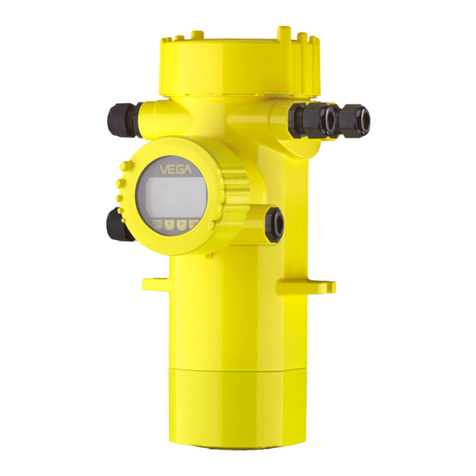
Vega
Vega MINITRAC 31 User manual

Vega
Vega VEGAPULS 68 User manual
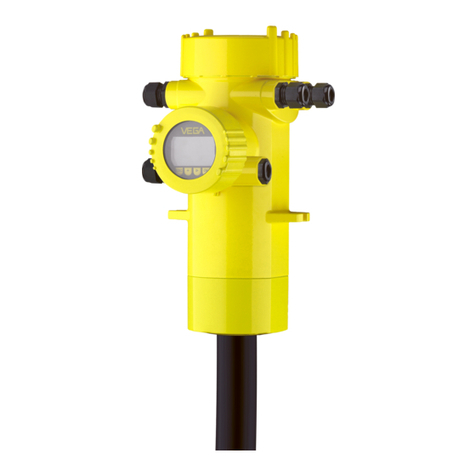
Vega
Vega FIBERTRAC 31 User manual
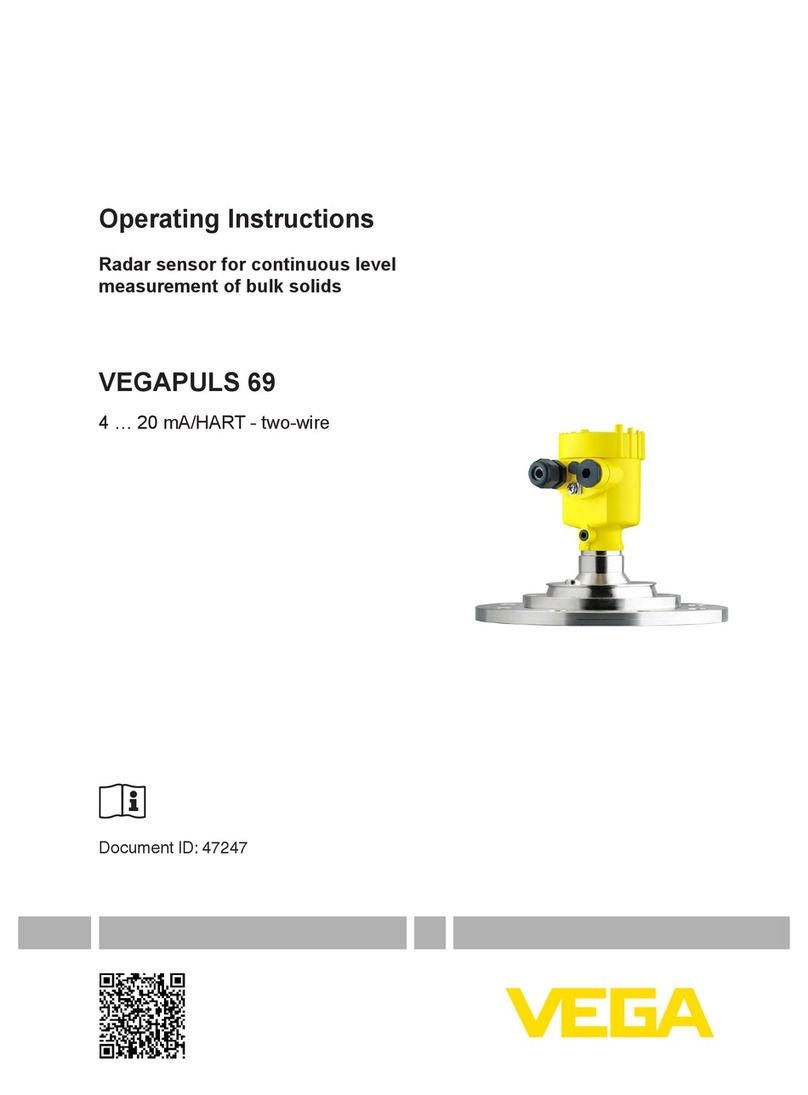
Vega
Vega VEGAPULS 69 User manual
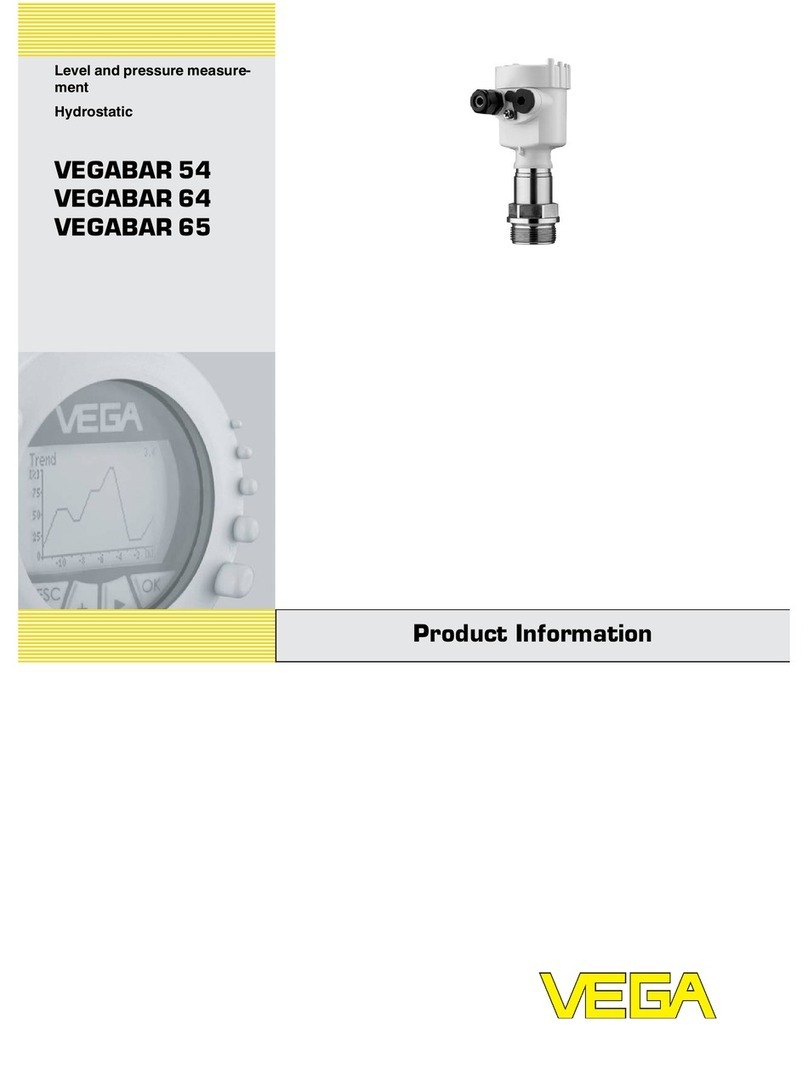
Vega
Vega VEGABAR 54 User manual

Vega
Vega VEGAPULS 65 User manual
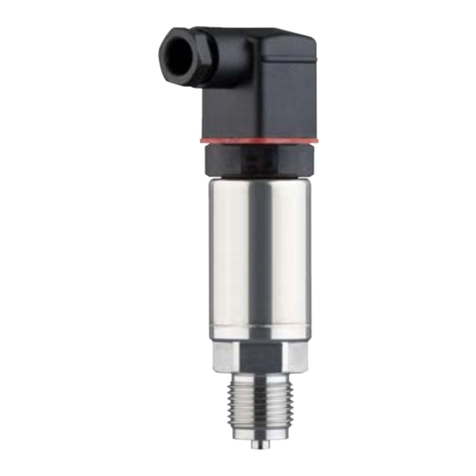
Vega
Vega VEGABAR 18 User manual
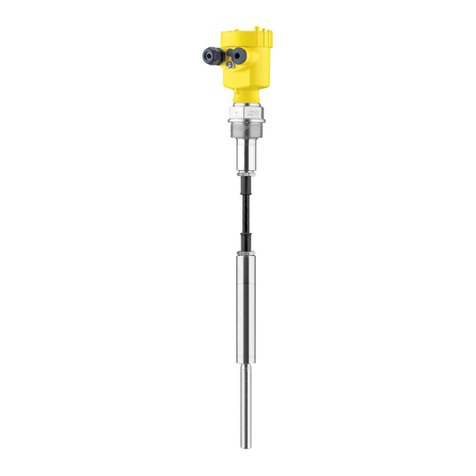
Vega
Vega VEGAVIB 62 User manual
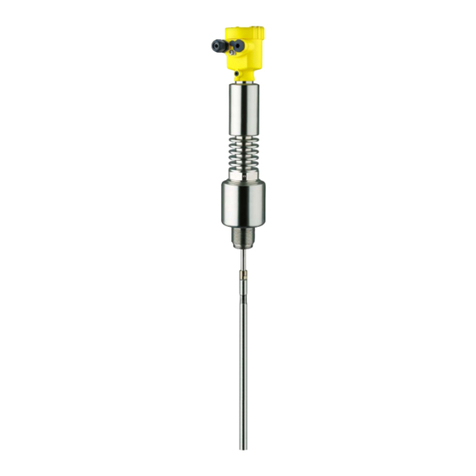
Vega
Vega VEGAFLEX 86 User manual
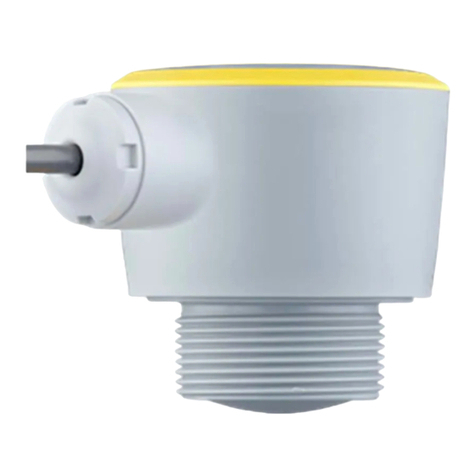
Vega
Vega VEGAPULS C 22 User manual

Vega
Vega VEGAFLEX 81 User manual

Vega
Vega VEGAFLEX 86 User manual
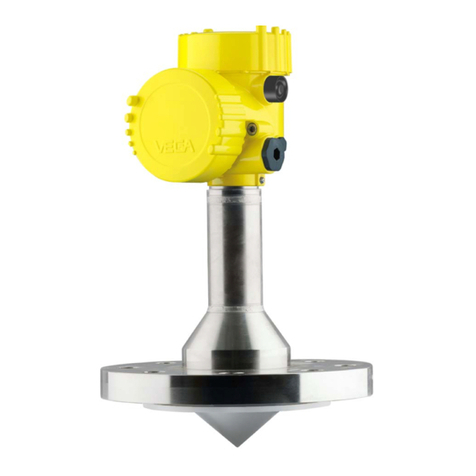
Vega
Vega VEGAPULS 63 User manual
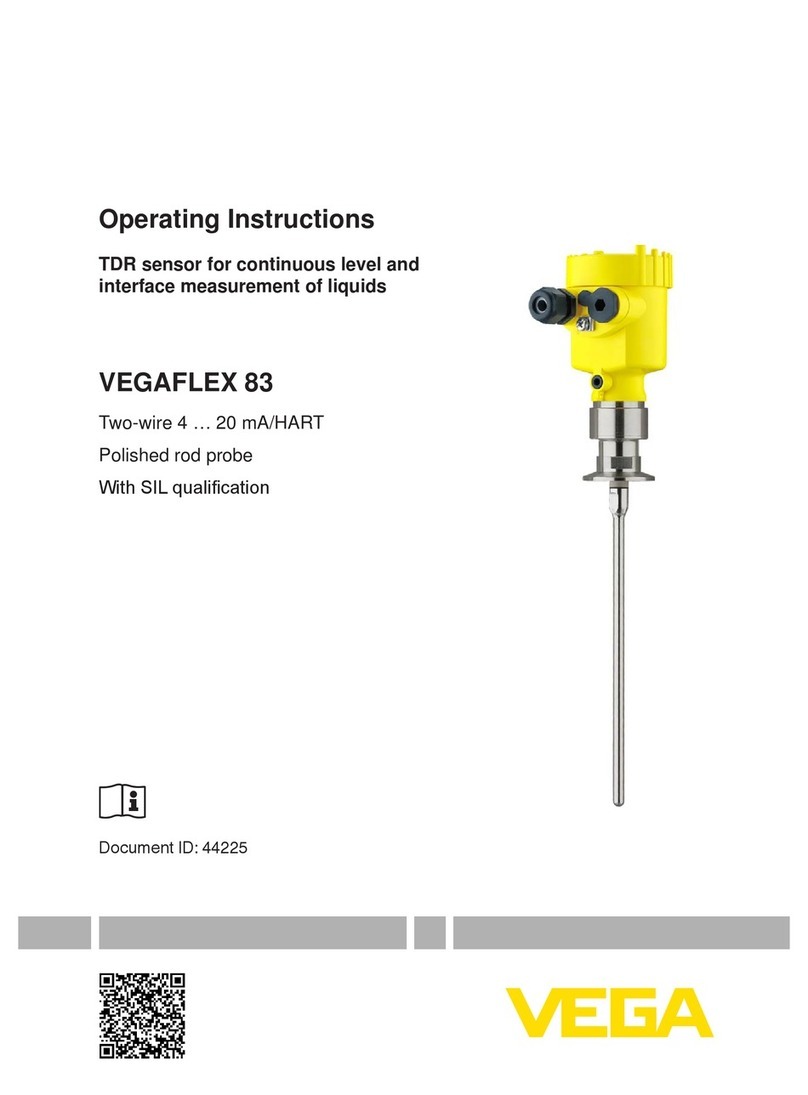
Vega
Vega vegaflex 83 User manual
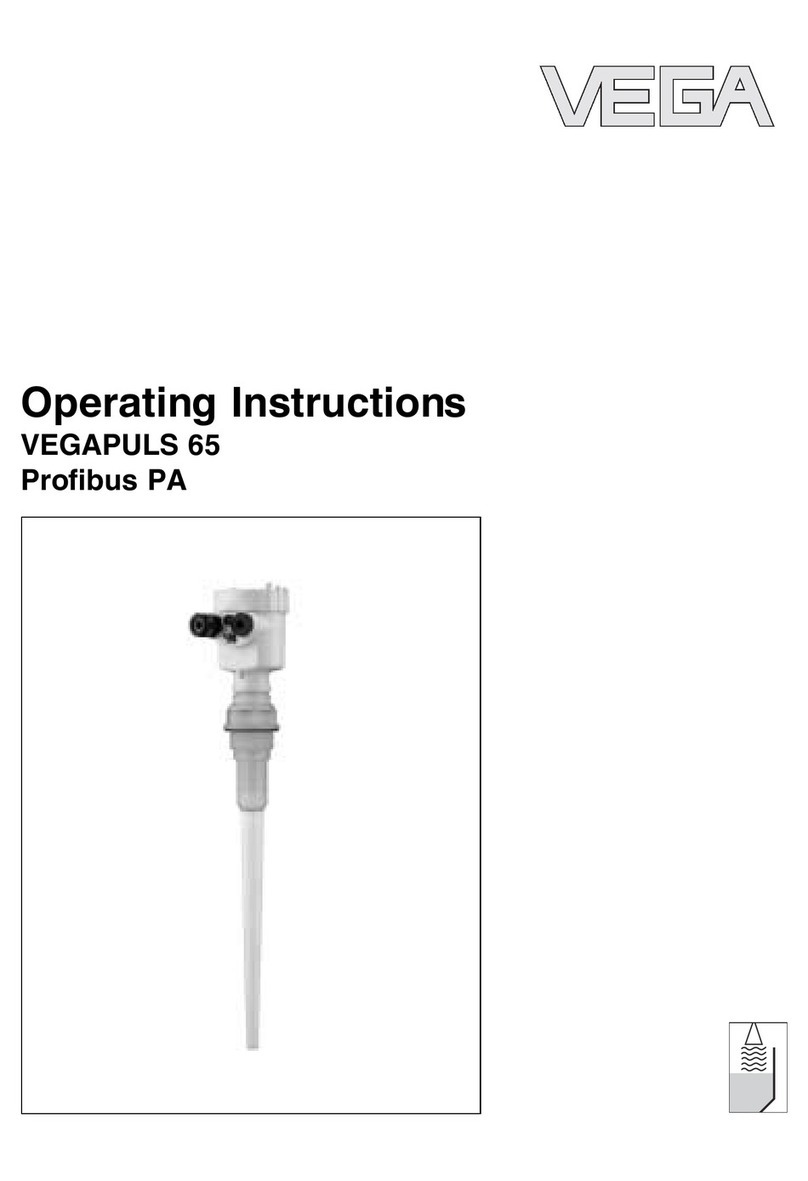
Vega
Vega VEGAPULS 65 User manual
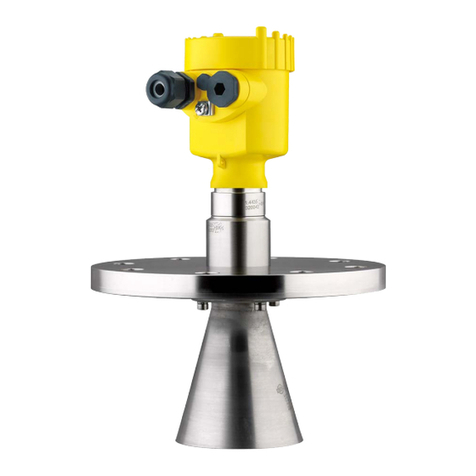
Vega
Vega VEGAPULS 66 Profibus PA User manual
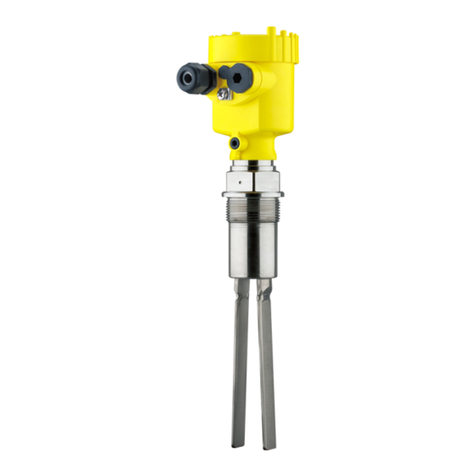
Vega
Vega VEGAWAVE 61 Instruction Manual

Vega
Vega vegaflex 83 User manual

Vega
Vega VEGABAR 82 User manual
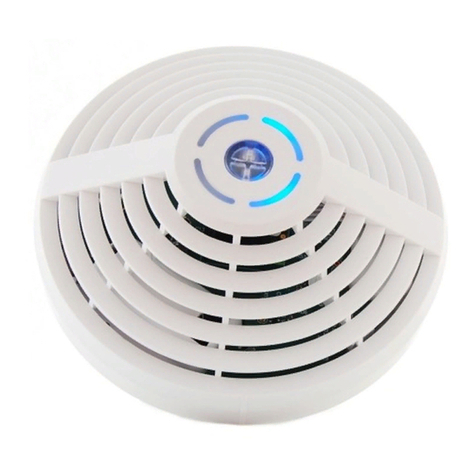
Vega
Vega SMART-SS0102 User manual

